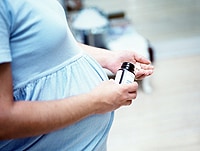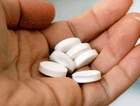|
|
|
YOU CANNOT BEAT 100%!
=====================================
JUST A TASTE OF THE DEBATE, GO TO ORIGINAL ARTICLE AND READ IT!
Medscape Medical News from the:
To [Vitamin] D or Not to D? That Is the Question
Drug & Reference Information
But their arguments were backed up by some serious science, and they both concurred that there are certain groups of people in whom it is necessary to ensure that vitamin-D levels are sufficient, such as pregnant women and those at risk for or with osteoporosis. And they also agreed on one way people can obtain more vitamin D: by going out in the sun for 30 minutes per day.
Where they differed, however, was that the vitamin-D proponent, Chantal Mathieu, MD, from Catholic University, Leuven, Belgium, said the list of people who need sufficient vitamin D "is so long that it really just makes more sense to give everyone small doses."
In the opposite corner, however, Mark Cooper, MD, from University Hospital, Birmingham, United Kingdom, argued that it is really only necessary to supplement specific, at-risk groups of people. "I am an investigator in randomized clinical trials of vitamin D, and I have nothing personally against [it], and I use it in my patients. But I tend to give it to people who actually need it, and that doesn't really include most of us," he observed.
And Dr. Cooper — who noted that there is a huge sector of the scientific community that is "evangelical" in its pro–vitamin-D stance — warned that physicians have been here before, with many other nutrients that subsequently, in large intervention trials, turned out to have a null effect or even be harmful. In fact, there is already evidence of risks with supplements of vitamin D from randomized clinical trials, with no evidence of benefit, he argued.
"Vitamin D — we all need more? Most of us don't, and more could actually do more harm than good."
What Does Vitamin D Do, and How Is "Deficiency" Defined?
Dr. Mathieu said the key role of vitamin D "is to promote resorption of calcium via the gut. One big lesson from all of the literature is that vitamin-D deficiency is not only bad because it's vitamin-D deficiency, but it also creates a bad calcemic status."
Vitamin-D deficiency is generally defined as a level of less than 20 ng/mL (<50 nm/L), and there are correlations in large observational studies "indicating that if you are vitamin-D deficient you get more cancer, especially colon cancer, you get more cardiovascular diseases, your immune system doesn't function properly, and overall you have a higher risk of dying," she stressed.
Going out in the sun is one option to boost vitamin D, she explained, noting that "even the dermatologists in Australia have reversed their zero-tolerance stance on the sun" in the past 2 years and conceded that 15 to 30 minutes per day in the sun "is allowed because it gives benefits." Nevertheless, the benefits must be balanced with the risks, she added, noting that "it's exactly the same wavelength of UV that you need to make vitamin D that also causes skin damage, aging, and skin cancers. So go back to nature and expose yourself to the sun, but do it with caution."
And she noted that UV rays in Northern Hemisphere winters are not strong enough to produce adequate levels of vitamin D, regardless of how long is spent in the sun. In addition, darker-skinned people, particularly those who do not expose themselves to the sun or who cover themselves, are particularly at risk. "We still see rickets in my country, in dark-skinned children who are exclusively breast-fed and whose mothers avoid the sun or are covered," she observed.
"You can also take it from foods," she explained, but added that the "only really rich food source" of vitamin D is cod-liver oil. "Salmon and mackerel from the ocean is a good source"; however, most of this fish is now bred in farms, and farm-bred fish do not have a lot of vitamin D.
But the key, she said, is to use smaller doses of vitamin D than have previously been recommended. The US Endocrine Society guidance, for example, advises supplementation with up to 2000 IU per day, but this is overzealous, she said. "A more reasonable dose is 600 to 800 IU per day," she noted, adding that she is an author on a new guidance, soon to be published in the Journal of Clinical Endocrinology and Metabolism, which will state that 2000 IU per day "is not warranted."



No comments:
Post a Comment